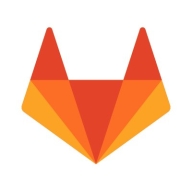

IBM Engineering Workflow Management and GitLab compete in software development management. GitLab has the upper hand thanks to its extensive feature set despite IBM's competitive pricing and support.
Features: IBM Engineering Workflow Management offers comprehensive change management and workflow capabilities that support well-coordinated process control and collaboration. Jazz Source Control provides isolated sandboxes for seamless code management and integration with tasks. It is valuable for managing stories, sprints, and releases, offering traceability and reporting from requirements to test cases. GitLab provides robust DevOps integrations and excels with its CI/CD pipeline support, simplifying configurations and deployment. It integrates source-code repository management with development, offering a streamlined architecture for modern practices.
Room for Improvement: IBM sometimes faces challenges with deployment ease, requiring structured planning and potential upfront investments. Users might also benefit from enhanced user interface updates to match current usability standards and feature sets. It would be helpful for IBM to simplify integrations and enhance flexibility. GitLab's vast feature set might be overwhelming, creating a steep learning curve for new users. Its user interface could benefit from refinement for more intuitive operations. Enhanced built-in analytics and reporting could better aid those unfamiliar with external tools.
Ease of Deployment and Customer Service: IBM Engineering Workflow Management requires meticulous deployment planning but offers strong customer support, addressing complex process and system requirements. GitLab is praised for its ease of deployment across cloud-based and on-premises environments, supported by a large online community and abundant resources. While IBM's customer support is robust, GitLab's flexible deployment options and community resources make it notably adaptable.
Pricing and ROI: IBM Engineering Workflow Management involves notable setup costs yet promises significant ROI through structured process management. GitLab offers more flexible pricing with a potentially faster ROI, leveraging open-source components and broad feature availability. The flexibility in GitLab's pricing and quicker returns make it appealing for diverse development teams and practices, optimizing cost-efficiency for varying scales.
Migrating to GitLab is bringing time-saving benefits, and everything is easier to automate.
We have saved time significantly, reducing deployment time from four hours to five minutes per deployment.
We have rarely needed to escalate issues to technical support since GitLab usually runs seamlessly.
I have interacted with architects for some advice during the implementation, and they were prompt in their response.
I have had meetings where they taught me, explained things, and provided guidance for starting from scratch.
It has all the features required for our coding and deployment needs, which makes it scalable to our changing requirements.
We're transitioning to OpenShift for future scalability with increased user numbers.
For scaling, other deployment options from GitLab's side need to be adopted.
I have not encountered any performance or stability issues with GitLab so far.
The updates are frequent and demanding, happening at least once a week due to security reasons.
We raised a request with GitLab support, but they were unable to help because they could not find the root cause of what went wrong.
It would be beneficial to have a user-friendly interface for setting up these configurations, instead of just writing YAML files.
It is essential to conduct proper testing, such as unit tests and code coverage, within the SDLC pipelines.
GitLab can improve its user interface to make conflict resolution more user-friendly.
Improved graphics in terms of metrics and connectivity to SharePoint from Microsoft products would be beneficial.
Even when working in other small organizations, we opted for GitLab as it was cost-efficient.
The pricing of GitLab is reasonable, aligning with what I consider to be average compared to competitors.
The price is high, and it limits user accessibility.
As we implement automated testing and DevSecOps, it speeds up the process by forty to sixty percent.
The Ultimate version offers enhanced features for security scanning through DAST and SAST analysis, which have greatly benefitted our project workflow.
By integrating GitLab as a DevOps platform, we have enhanced agility, improved our time to market, and different teams can work collaboratively on various projects.
It provides more efficiencies for our scrum team, ensures everyone is on the same page, and offers leadership insight into progress.
| Product | Market Share (%) |
|---|---|
| GitLab | 28.6% |
| IBM Engineering Workflow Management | 1.6% |
| Other | 69.8% |


| Company Size | Count |
|---|---|
| Small Business | 35 |
| Midsize Enterprise | 9 |
| Large Enterprise | 42 |
| Company Size | Count |
|---|---|
| Small Business | 3 |
| Midsize Enterprise | 5 |
| Large Enterprise | 9 |
GitLab offers a secure and user-friendly platform for CI/CD pipeline management, code repository control, and collaboration, enhancing development speed and efficiency. It facilitates automation with extensive customization and tool integration, ideal for DevOps processes.
GitLab supports source code management, version control, and collaborative development. It's frequently used in CI/CD processes to automate builds and deployments while integrating DevOps practices. GitLab allows companies to manage repositories, automate pipelines, conduct code reviews, and maintain development lifecycles. The platform supports infrastructure and configuration management, enabling efficient code collaboration, deployment automation, and comprehensive repository handling. Many organizations commit and deploy developed code using GitLab's capabilities.
What are GitLab's most valuable features?In specific industries, GitLab serves as a backbone for source code management and CI/CD implementation. Companies leverage its capabilities for infrastructure management and deployment automation, thus streamlining project delivery timelines. Its ability to handle configuration management and code repositories effectively aids in maintaining development lifecycles, making it a preferred choice for organizations committed to enhancing their DevOps practices.
IBM Engineering Workflow Management manages plans, tasks, the project status and acts as the critical link between required and delivered work. It provides flexibility to adapt to any process, which enables companies to adopt faster release cycles and manage dependencies across both small and complex development projects. This solution offers no-charge server software and flexible pricing models. It becomes a complete IBM Engineering Lifecycle Management solution—when purchased as a set of seamlessly integrated tools: IBM Engineering Workflow Management, IBM Engineering Test Management, and IBM Engineering Requirements Management DOORS Next.
We monitor all Enterprise Agile Planning Tools reviews to prevent fraudulent reviews and keep review quality high. We do not post reviews by company employees or direct competitors. We validate each review for authenticity via cross-reference with LinkedIn, and personal follow-up with the reviewer when necessary.